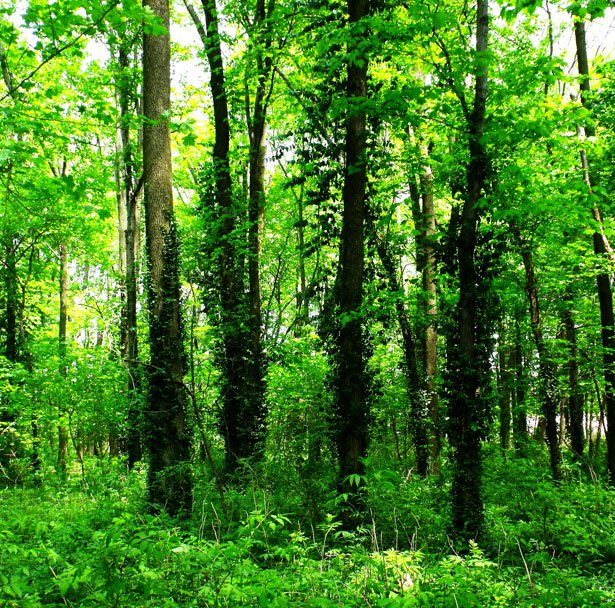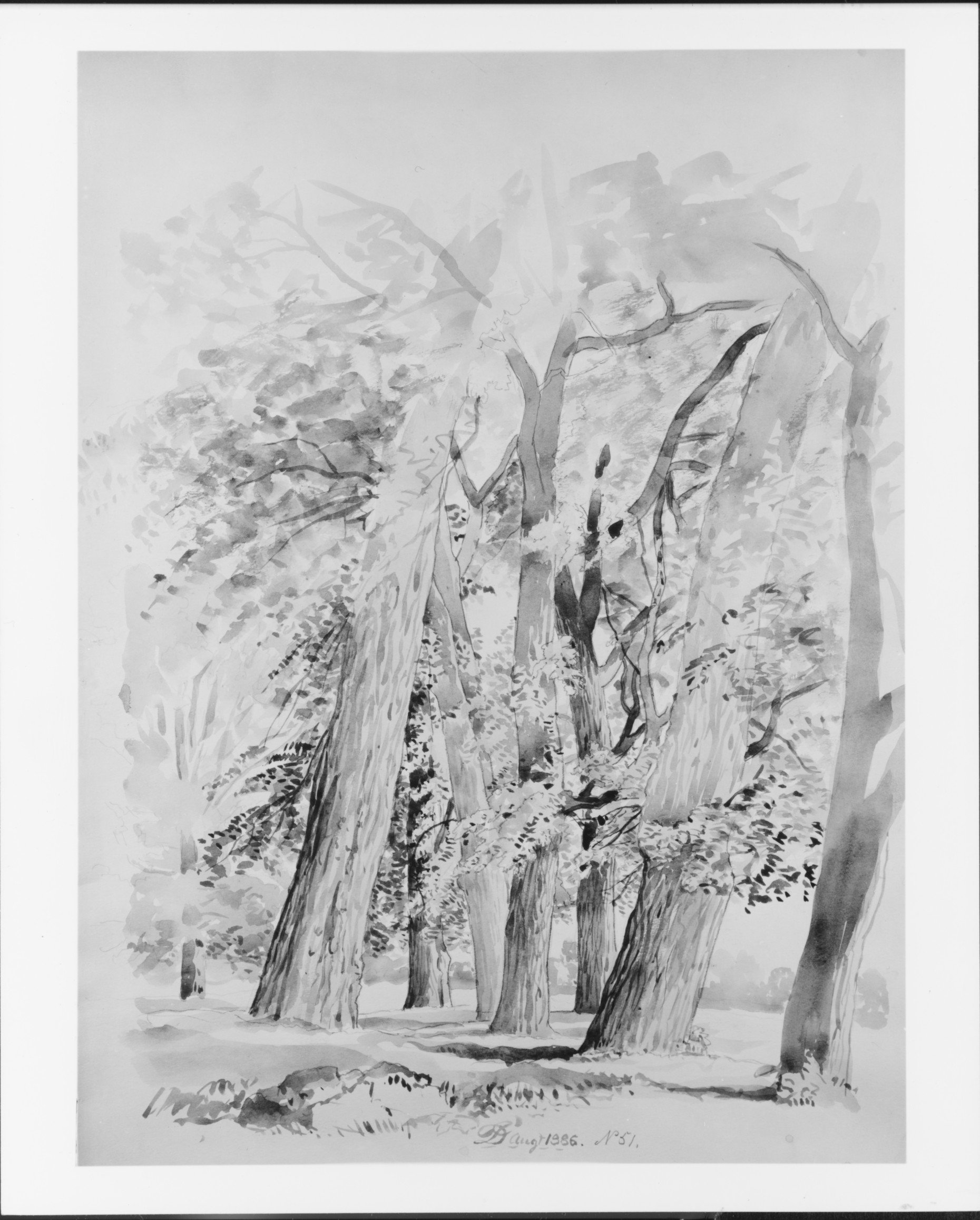Produced for K-12 educators, Teach This Poem features one poem a week from our online poetry collection, accompanied by interdisciplinary resources and activities designed to help teachers quickly and easily bring poetry into the classroom. The series is written by our Educator in Residence, Dr. Madeleine Fuchs Holzer, and is available for free via email.
Featured Poem
Four Trees by John Kovacich

This photograph is in the public domain.
Trees by David Johnson

Trees by David Johnson (1827–1908). Date: 1886. Medium: Black ink washes and graphite on off-white wove paper. Dimensions: 18 7/16 x 12 7/8 inches. Credit Line: Purchase, Charles and Anita Blatt Gift, 1968. www.metmuseum.org
Classroom Activities
- Project the image of the photograph “Four Trees” by John Kovacich so all your students can see it. Ask them to write down all that they notice in the photograph.
- Project the image of the painting “Trees” by David Johnson. On a separate piece of paper, ask your students to write down all that they notice in the painting.
- Ask your students to get in groups of four to five and discuss the similarities and differences between the images of the photograph and the painting.
- Conduct a whole-class discussion: What do we experience (cognitively and emotionally) from the image of the photograph? What do we experience (cognitively and emotionally) from the image of the painting? To what do your students attribute the differences?
- Project the poem “Crows” by Marilyn Nelson in front of the class. Ask your students to read it once, silently. Ask them to read it a second time, writing down the words and phrases that jump out at them.
- Ask one of your students to read the poem aloud to the class. Ask the listening students to write down additional words and phrases they notice when they hear the poem read.
- Ask another student to read the poem aloud, and have the listening students write down new words and phrases they notice. Have your students turn and talk with a partner about what they have seen and heard in the different readings of the poem.
- Conduct a whole-class discussion: As they think about the images of the trees, as well as the words and phrases in the poem that jumped out at them, what do your students think Marilyn Nelson might mean when she talks about “…the hand-created taste of leftover macaroons / The instant sparks in the earth’s awareness”?
